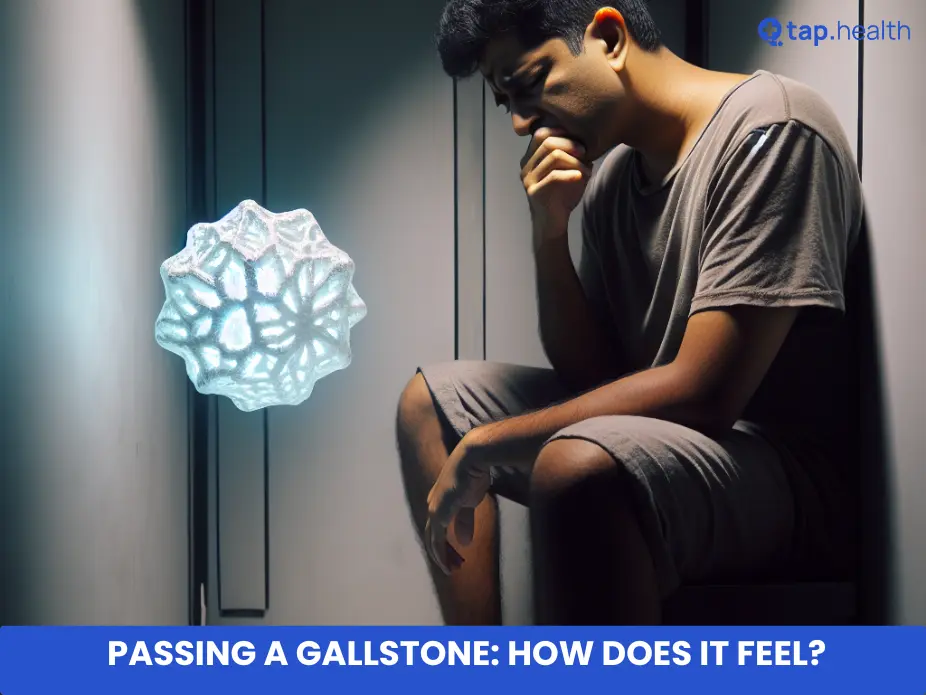Table of Contents
- Early Diabetes Detection: Latest Testing Advances
- Understanding Diabetes Tests: A Comprehensive Guide
- New Diabetes Testing Methods: What’s Available Now?
- Improve Your Health: Early Diabetes Detection Strategies
- Diabetes Prevention & Early Detection: Key Takeaways
- Frequently Asked Questions
Diabetes affects millions worldwide, and the key to managing this condition effectively lies in early detection. Are you worried about your risk? This blog post dives into the latest advancements in diabetes testing, providing you with the most up-to-date information on screening methods and technologies. We’ll explore everything from simple blood glucose tests to cutting-edge diagnostic tools, empowering you to make informed decisions about your health. Understanding different testing methods is crucial, and we’ll break it all down in a clear, easy-to-understand way. Let’s explore Early Detection: The Latest News on Diabetes Testing together!
Early Diabetes Detection: Latest Testing Advances
India’s facing a diabetes epidemic, with a worrying surge in early-onset cases—often hitting people between 25 and 40. This makes early detection incredibly important, especially in India and other tropical regions seeing similar trends. Catching it early means quicker intervention, better long-term health, and fewer serious complications down the line. Think of it like this: the earlier you spot a small fire, the easier it is to put out.
Understanding the Risk Factors
Knowing your risk is half the battle. Family history is a big one, but so are things like carrying extra weight, a sedentary lifestyle, and a diet heavy on processed foods and sugary drinks. These factors significantly raise your chances of developing type 2 diabetes, particularly if you’re younger and live in a region like India. Regular check-ups, including blood sugar tests, are essential—especially if you tick several of these boxes. Many people don’t notice symptoms early on, making regular testing all the more crucial. Want to know more about early warning signs? Check out our article: 10 Early Signs and Symptoms of Diabetes?
Advanced Testing Methods
Beyond the standard fasting blood glucose test, we have more sophisticated tools. HbA1c testing looks at your average blood sugar over the past few months, giving a more complete picture. Continuous glucose monitors (CGMs) are also becoming popular; they offer real-time glucose data, helping you manage your levels and spot problems early. Access to these advanced technologies is key for effective management, especially in high-risk communities.
Taking Actionable Steps
For people in India and similar regions, proactive steps are vital. Focus on a balanced diet packed with fruits, vegetables, and whole grains. Cut down on processed foods and sugary drinks. Regular physical activity—even a brisk walk most days—makes a huge difference. Early detection is paramount; regular check-ups and honest conversations with your doctor about your family history and lifestyle are essential. Don’t hesitate to ask about the best testing methods for you.
Empowering Communities
Raising awareness is key. Educating people, particularly young adults, about risk factors and the importance of regular testing can dramatically improve early detection rates. Making testing accessible and affordable is crucial for widespread adoption of preventative measures. Let’s work together to beat this!
Understanding Diabetes Tests: A Comprehensive Guide
Early Detection Saves Lives
Diabetes is a serious concern, especially for adults aged 20-64 in many parts of the world, particularly in India and other tropical regions. Think of it like this: catching a fire early is much easier than dealing with a raging inferno. Early detection of diabetes is the same – it significantly improves your chances of managing the condition effectively. The International Diabetes Federation highlights a worrying trend: a large portion of the global diabetic population falls within this age group. Check out their data here to see the impact firsthand. This emphasizes the urgent need for accessible testing, making it easier for everyone to get checked.
Types of Diabetes Tests
There are several tests your doctor might use to diagnose diabetes. A fasting blood glucose test checks your blood sugar after an overnight fast – it’s like a snapshot of your sugar levels at a specific moment. An HbA1c test, on the other hand, provides a bigger picture, showing your average blood sugar over the past two to three months. Finally, an oral glucose tolerance test (OGTT) involves drinking a sugary drink and then having your blood sugar checked – it helps reveal how your body processes sugar. Which test is best? That’s something you should discuss with your doctor; they’ll consider your individual needs and risk factors.
Access to Testing in India and Tropical Countries
While awareness is growing, access to regular diabetes screening remains a challenge in many places. Cost, distance to healthcare facilities, and even lack of awareness all play a role in delaying diagnosis. But there’s hope! Several initiatives are actively working to improve access to affordable testing and raise awareness.
Taking Action: Your Next Steps
Regular checkups are key, especially if diabetes runs in your family or you’re in the 20-64 age bracket. Talk to your doctor – they can assess your risk and recommend the right tests for you. Early detection means you can start managing your diabetes sooner, significantly improving your quality of life and preventing serious complications down the line. Don’t put it off; schedule that appointment! For those managing diabetes as they age, our guide on Managing Diabetes as You Age: Challenges and Solutions offers valuable insights.
New Diabetes Testing Methods: What’s Available Now?
The global diabetes epidemic is alarming, with a projected surge in cases across the Indian subcontinent and tropical regions. The International Diabetes Federation reports a staggering 536.6 million people aged 20-79 living with diabetes in 2021 – a number poised to skyrocket. This highlights the urgent need for accessible, accurate diabetes testing, especially in these areas.
Non-Invasive Testing Options
Thankfully, technology is stepping up. While the trusty finger-prick glucose meter remains a vital, affordable tool—especially crucial in resource-limited settings—exciting non-invasive options are emerging. Continuous Glucose Monitors (CGMs), for instance, track glucose levels throughout the day without constant pricks. Imagine: a small sensor under your skin providing a constant stream of data for better management! The convenience is undeniable, but access and affordability remain significant hurdles in many Indian and tropical nations.
Early Detection Strategies in High-Risk Populations
Early diagnosis is key. Regular check-ups are vital, particularly for individuals with a family history of diabetes or those with risk factors like obesity and inactivity. Think of it like this: early detection is like catching a small fire before it becomes a raging inferno. Public health campaigns emphasizing awareness and regular screenings are crucial, alongside promoting simple lifestyle changes—a balanced diet and regular exercise can make a world of difference.
Access and Affordability Challenges
The challenge? Making these advanced technologies available and affordable to everyone. Bridging the affordability gap requires government subsidies, insurance coverage, and robust community programs. This is especially vital in remote areas with limited healthcare access. It’s about ensuring equitable care for all.
Taking Action Today
If you live in a high-risk area, prioritize regular health checks and talk to your doctor about suitable testing options. Early detection and effective management are vital for preventing serious complications. Let’s advocate for better access to affordable, accurate testing and promote healthy lifestyles to combat this global health crisis. For more on how technology is improving diabetes management, check out our article: How Technological Advances Improve Diabetes Lifestyle.
Improve Your Health: Early Diabetes Detection Strategies
Understanding the Risk in India and Tropical Countries
Diabetes is a silent epidemic, especially in India and other tropical regions. It’s a serious concern, but the good news is that up to 80% of type 2 diabetes cases could be prevented or delayed through lifestyle changes. Think of it like this: small, consistent choices add up to big, long-term health benefits. Regular check-ups are key – they’re your proactive shield against this widespread health challenge.
Recognizing the Symptoms
While excessive thirst and frequent urination are classic signs, many with type 2 diabetes experience no obvious symptoms early on. This sneaky nature is why regular screenings are so crucial. Pay attention to subtle changes: unexplained weight loss, blurry vision, or slow-healing sores. A family history of diabetes or carrying extra weight increases your risk, making vigilance even more important.
Early Detection Methods
Regular blood glucose tests are your best bet. Your doctor can recommend how often you should get tested based on your individual risk profile. An HbA1c test provides a broader picture, showing your average blood sugar levels over the past few months. These tests allow for early diagnosis and personalized management plans, paving the way for better outcomes.
Lifestyle Changes for Prevention
A healthy lifestyle is your most powerful weapon. This means a balanced diet bursting with fruits, vegetables, and whole grains. Regular exercise is equally vital. In India and tropical areas, think about incorporating delicious local produce – mangoes, spinach, and spices are fantastic choices! Small, consistent changes—like swapping sugary drinks for water or taking a brisk walk daily—make a real difference. For more in-depth strategies, check out our guide: 10 Proven Tips for Effective Diabetes Management.
Taking Action
Don’t wait! Schedule a check-up. Discuss your risk factors with your doctor and find out if diabetes screening is right for you. Early detection and proactive management are your keys to a healthier, longer, and more vibrant life. Your future self will thank you for it.
Diabetes Prevention & Early Detection: Key Takeaways
Understanding the Silent Epidemic
Diabetes is often called a silent threat, and for good reason. According to the IDF Diabetes Atlas, nearly 50% of global diabetes cases go undiagnosed. That’s millions of people unknowingly at risk of life-altering complications like heart disease, kidney failure, and blindness. In countries like India and other tropical regions, the burden is especially heavy due to lifestyle and environmental factors. The good news? Early detection saves lives.
Risk Factors & Early Warning Signs
Think of diabetes risk as a puzzle made up of several pieces:
-
Family history of diabetes
-
Obesity or excess weight
-
Sedentary lifestyle (little to no physical activity)
-
Unhealthy diet, especially high in refined carbs, sugar, and processed foods
In tropical regions, these risks often overlap, raising vulnerability even more.
🔍 Early warning signs to watch out for:
-
Increased thirst and frequent urination
-
Unexplained weight loss
-
Constant fatigue or low energy
These symptoms might feel minor—but they’re signals worth investigating.
Actionable Steps for Early Detection
-
Get tested regularly if you have risk factors or family history.
-
Ask your doctor about an HbA1c test, which shows your average blood sugar over 2–3 months.
-
Take advantage of affordable screening programs offered by government hospitals, local clinics, and community health drives in many tropical countries.
⏱ Don’t wait—a simple blood test today could prevent complications tomorrow.
Protecting Your Future
Prevention doesn’t require drastic changes—it’s about small, consistent steps:
-
Maintain a healthy weight
-
Eat a balanced diet with whole grains, vegetables, and lean protein
-
Stay physically active with at least 30 minutes of daily movement
-
Manage stress and sleep to avoid triggering blood sugar spikes
Together, early detection + proactive lifestyle habits form the strongest shield against diabetes.
✅ Bottom line: Don’t let diabetes stay hidden. Take control, get screened, and start building a lifestyle that protects your future health.
Frequently Asked Questions on Early Diabetes Detection
Q1. What is the significance of early diabetes detection, particularly in India and other tropical regions?
Early detection is crucial because it allows for quicker intervention, better long-term health management, and a reduction in serious complications. In India and tropical regions, where diabetes is surging, early detection is even more vital due to the increasing number of early-onset cases.
Q2. What types of tests are available for detecting diabetes, and which one is best for me?
Several tests can detect diabetes, including fasting blood glucose tests, HbA1c tests (showing average blood sugar over the past few months), and oral glucose tolerance tests. The best test for you depends on your individual needs and risk factors; your doctor can help determine the most appropriate option.
Q3. What are the key lifestyle changes I can make to reduce my risk of developing diabetes and improve my health?
Maintain a balanced diet rich in fruits, vegetables, and whole grains, while reducing processed foods and sugary drinks. Regular physical activity, even a daily brisk walk, is also essential. These combined lifestyle changes significantly lower your risk and improve overall well-being.
Q4. What are some common misconceptions or concerns about diabetes testing and management?
A common misconception is that only people with obvious symptoms need to be tested. However, many with type 2 diabetes experience no early symptoms, highlighting the need for regular screenings. Another concern is access to testing and affordability; thankfully, initiatives are working to improve access and make testing more affordable.
Q5. What steps can I take today to improve my chances of early detection and effective management of diabetes?
Schedule a check-up with your doctor to discuss your risk factors and get appropriate testing. If you have a family history of diabetes or other risk factors, be sure to mention this to your doctor. Regular check-ups, combined with a healthy lifestyle, are essential for both early detection and effective management.



